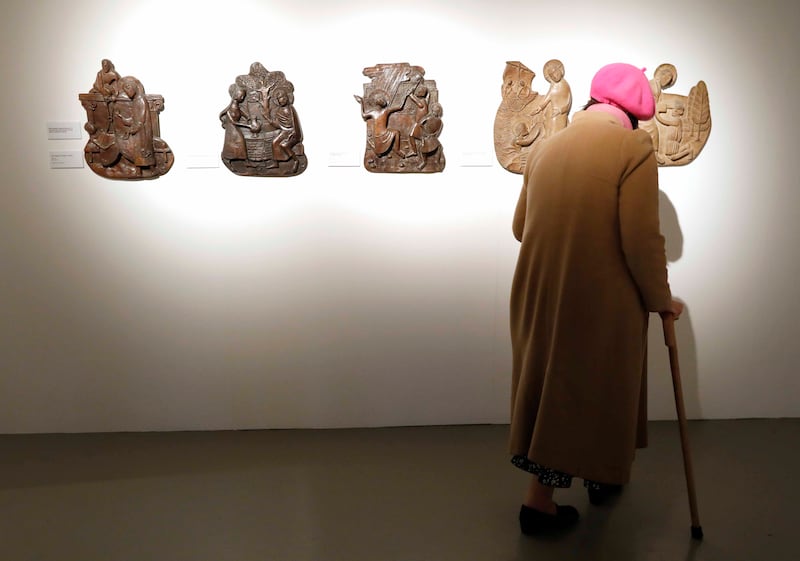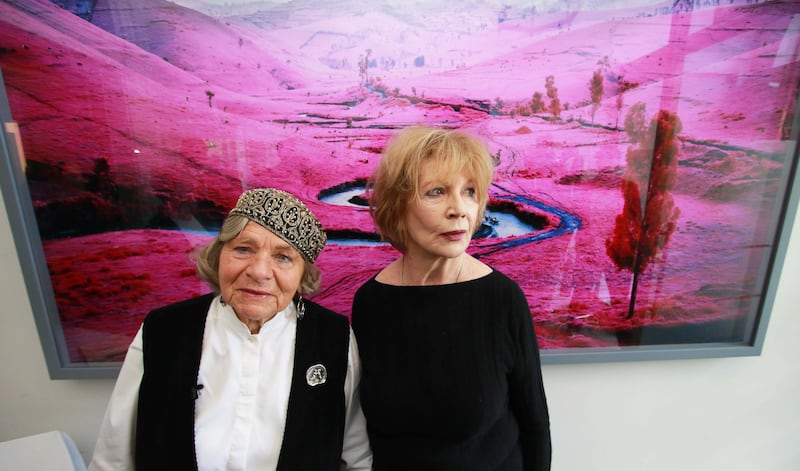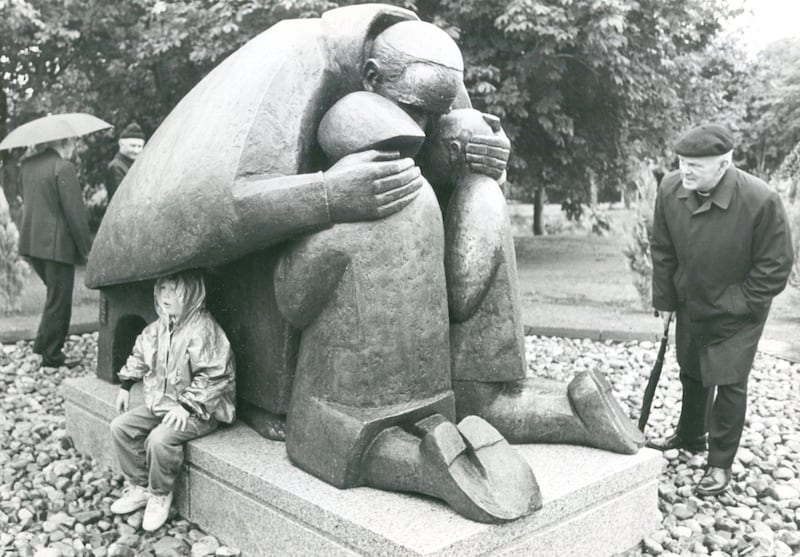Imogen Stuart, one of Ireland’s leading sculptors, whose works can be found in churches and public spaces around the island, has died aged 96.
After a seven-decade career, Stuart remained active and creative to the end of her life, with a retrospective of her work in Dublin Castle until last month and a documentary, Imogen from the Heart, screened on RTÉ 1 in January.
Born Imogen Werner in Berlin in 1927, she grew up in a well-off, cosmopolitan home. Her father, Bruno E. Werner, was a leading newspaper arts editor and later a cultural diplomat.
While training as a sculptor in postwar Bavaria she met her future husband Ian Stuart, son of Francis Stuart and Iseult Gonne Stuart.
READ MORE
They moved to Ireland in 1949, she converted to Catholicism and they married, settling in the Stuart family home in Laragh, Co Wicklow where they had three daughters before moving to Sandycove. They separated in the early 1970s and later divorced.

Working mainly on church commissions, Stuart soon found her distinctive style: blending the interwar expressionist style of her homeland with the lives of Irish saints – starting with St Kevin in Glendalough.
It was a style that served her well over seven decades in popular works such as the Angel of Peace on the exterior of St Teresa’s Carmelite Church on Dublin’s Clarendon Street; the bronze crucifix at St Patrick’s Cathedral, Co Armagh; and the decorative doors of Galway Cathedral.
Among her several Stations of Cross were sets for Firhouse in Dublin and Ballintuber Abbey, Co Mayo.
She carved the altar and baptismal font for UCC’s Honan Chapel and the monumental sculpture of Pope John Paul II outside St Patrick’s College, Maynooth.
[ A life in stone: Sculptor Imogen Stuart reflects on her life and her workOpens in new window ]
Outside of churches, prominent works include the Fiddler of Dooney, based on the Yeats poem, at Stillorgan shopping centre and Pangur Bán, drawing on the poem about a monk and his cat, now on display at the visitor centre at Áras an Uachtaráin.
In 2005 her Flame Of Human Dignity was installed in the courtyard of the Paris Centre Culturel Irlandais while her Arch of Peace, erected in Cavan town in 1989, was unveiled last year at a new location. Her self-portrait in oak is part of the National Gallery collection.
As well as wood Stuart worked often in stone, the latter often in close collaboration with carver Phil O’Neill.
Her last major design, unveiled in May 2022, is a granite standing stone, Stele, carved by Ciaran Byrne, on a hillock adjacent to the Forty Foot in Sandycove with carved representations of King Laoghaire and St Patrick on two sides.

That work was officially unveiled by President Michael D Higgins. Opening a 2022 retrospective of her work in Mary Immaculate College, Limerick, Mr Higgins said: “As a nation we can be deeply grateful to Imogen for her great spirit of generosity and for the rich wealth of public art which has so enhanced our society and our shared environment.”
Writing for that exhibition’s catalogue, former Irish Times art critic Brian Fallon noted how Stuart stayed true to her own instincts and training.
“She was basically out of step with the times and remained so for much of her long career,” he wrote, though this never bothered her “so long as she could find creative fulfilling work to express herself and, of course, touch the hearts or emotions of the public for whom she largely worked”.
Later in life Stuart received many honours from her two homelands. A member of Aosdána since 1981, she was made a Saoi in 2015 and was elected a professor of sculpture at the Royal Hibernian Academy in 2000. In November 2018, she received the Cross of the Order of Merit of the Federal Republic of Germany, her homeland’s highest civil honour.


German ambassador Cord Meier-Klodt said “no contemporary artist left a deeper and more tangible imprint on German-Irish relations”.
In 2010 President Mary McAleese presented her with the McAuley Medal from Mary Immaculate College at the University of Limerick, which holds a large collection of her work.
“Imogen is such a human being,” remarked Mrs McAleese, “that if she never painted or sculpted a thing, she would still be a remarkably vibrant, generous, life-enhancing human being.”
In 1988 her daughter Siobhan died in a car crash. Her only sister, Sibylle, died in 2022 and she is survived by two daughters, Aisling and Aoibheann.
Asked about death in The Irish Times in 2021, Stuart said: “I will miss music, but I don’t really like thinking about death. I don’t like to think too much about an afterlife, but I hope there is one, because of all those wonderful people who died. They can’t be all gone. Can they?”
- Listen to our Inside Politics Podcast for the latest analysis and chat
- Sign up for push alerts and have the best news, analysis and comment delivered directly to your phone
- Find The Irish Times on WhatsApp and stay up to date









